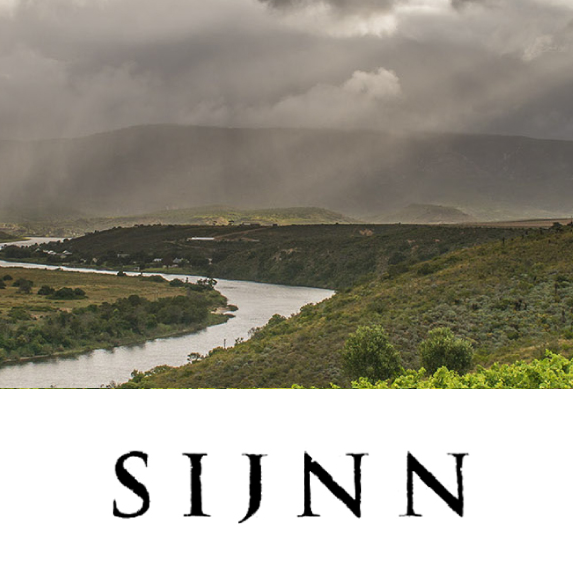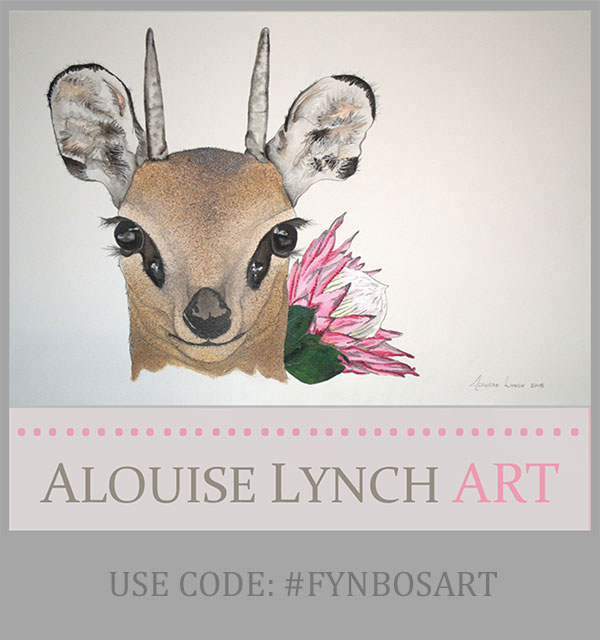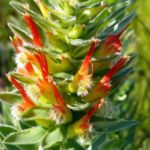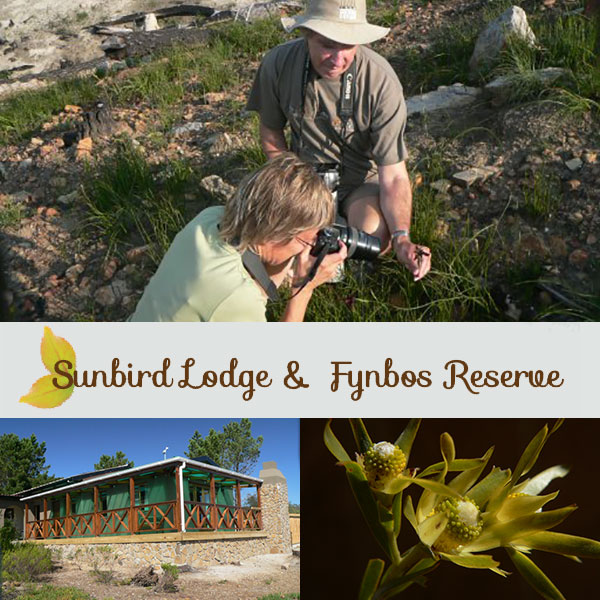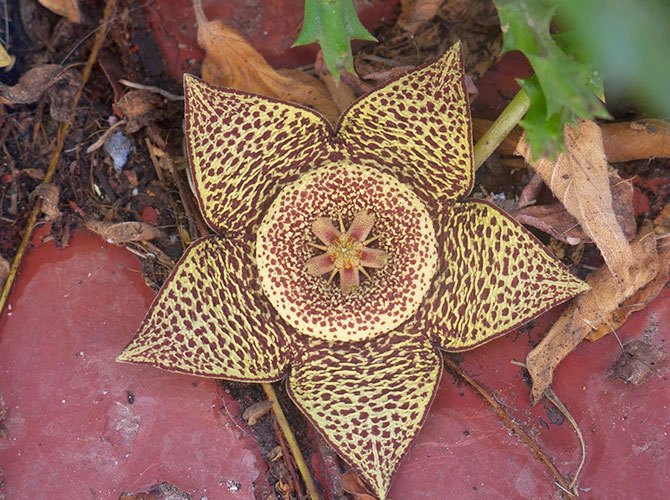
A Stink on the Stoep
This autumn the weather of the last few weeks has had Capetonians all over hunkered down with their hot chocolate and warmest clothes and blankets, as unusually early winter rain has arrived. There has been a distinct chill in the air and reports have come in of snowfalls in the mountains further inland. While drinking my morning tea on the stoep and watching raging torrents of water cascading down the eastern face of Table Mountain, I noticed this curious and beautiful plant flowering at my feet for the first time.
Orbea variegata is a member of the Apocynaceae family which occurs from Table Mountain in the far south-west in scattered localities through to the Northern Cape. It grows naturally in well-drained rocky areas from 5-1,000m above sea level.
This species was one of the first to be described by European botanists after their arrival at the Cape in 1812. Sadly nowadays it is become far less common on Table Mountain as a result of illegal collections, despite it being fairly commonplace in cultivation. This is one of the many conservation challenges of having a city within a biodiversity hotspot.
Orbea variegata is most commonly known as the African Carrion Flower. It is one of many angiosperms in the Cape that have adapted to attract dung or carrion flies for pollination by mimicry of their food and brood sites.
This process is known as sapromyiophylly and is exhibited by numerous plant families, including Rafflesia arnoldii which comes from the rainforests of Sumatra and Borneo. This plant is known for producing the world’s largest individual flower, which can be up to one metre across and weigh up to 11kg. On a more diminutive scale, this phenomenon has also been observed among mosses and fungi.
So how do these plants attract their pollinators? They do so in a variety of ways. In the case of our friend flowering on my stoep, it gives off a nauseating, unpleasant odour similar to that of rotting flesh. The petals of the flowers have a mottled appearance, designed to imitate the flesh of a decomposing corpse. The carrion flies are easily fooled, being lured in for further exploration.
After landing on the flower and crawling into the centre, pollen packets become stuck to their tongues. At this point, it becomes clear that all is not what it appears and the fly departs. Luckily for the plant, the carrion fly doesn’t learn from its mistake and is deceived into visiting the next flower. Here the pollen is removed from the fly’s tongue and pollination is thus complete.
Find me on Instagram
Plant Information
Connect on Social
Connect on Facebook, Twitter and Instagram
Taking Action
There are many environmental organisations based in Cape Town and beyond that require the services of volunteers to undertake their work. So if you have a little time to spare please get involved.

